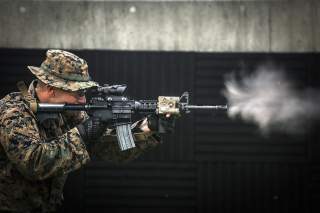DARPA Wants to Turn Infantry Into Instant Combat Engineers
Could it work?
DARPA has a plan to turn regular U.S. infantry into instant combat engineers—but without all the heavy equipment such as armored bulldozers.
The Pentagon’s pet research agency is looking for ultra-strong materials that small infantry units can use for a variety of tasks in urban combat, such as erecting obstacles, fortifications and camouflage.
DARPA names the project “Rapunzel,” after the fairytale maiden with hair strong enough for a man to climb. The goal is to tackle a conundrum: modern infantry frequently have to perform combat-engineering tasks such as erecting or dismantling fortifications and obstacles, but it’s only the combat engineers who get the specialized heavy vehicles and equipment, and that gear tends to be tactically awkward and of limited availability.
“Currently, small units are obliged to use theater (i.e., large formation) scale items such as protective barriers, ribbon or float bridges, structures formed from prefabricated concrete and other materials, qualified personal armor kits, as well as heavy equipment transporters and installers,” DARPA notes. “The materials used in these items often limit performance, are heavyweight, and can have unintended consequences. For example, heavy armor reduces urban mobility, which can adversely impact a squad or platoon’s survivability when operating in close quarters.”
Rapunzel aims to take advantage of the new era of nanotech, where materials made of microscopic nanotubes can create nanomaterials that are lightweight but incredibly strong. “Recent advances in materials and additive manufacturing—such as the development of bulk printed nanotube/metal composites—are synergistic and suggest that a new era of rapidly generated, custom structures constituted of super-strength materials is at hand,” DARPA says.
The intended users are individual soldiers, fire teams and squads. In effect, DARPA wants to give combat infantry the equivalent of combat 3-D printers, by using nanomaterials that can be quickly shaped into any desired structure.
Rapunzel will focus on devising new materials and engineering systems in four areas: mobility to allow U.S. troops to maneuver on an urban battlefield, countermobility to erect obstacles in cities, concealment to camouflage friendly troops and installations, and survivability to protect soldiers, vehicles and civilians. Rapunzel will also use four types of materials: particles, fibers and filaments, films, and engineered origami (folded deployable structures).
Interestingly, DARPA also suggests one of the potential dangers of turning infantry into engineers: does a rifleman have the skills to become an instant materials science expert? Considering what happens when poorly built bridges or buildings collapse, it’s an important question.
“Can non-material science specialists within small units identify and assess material content and usability?” DARPA asks. Can they handle “immediate material formation, real-time fabrication processes, and instant testing/certification?”
Michael Peck is a contributing writer for the National Interest. He can be found on Twitter and Facebook.
Image: Flickr

